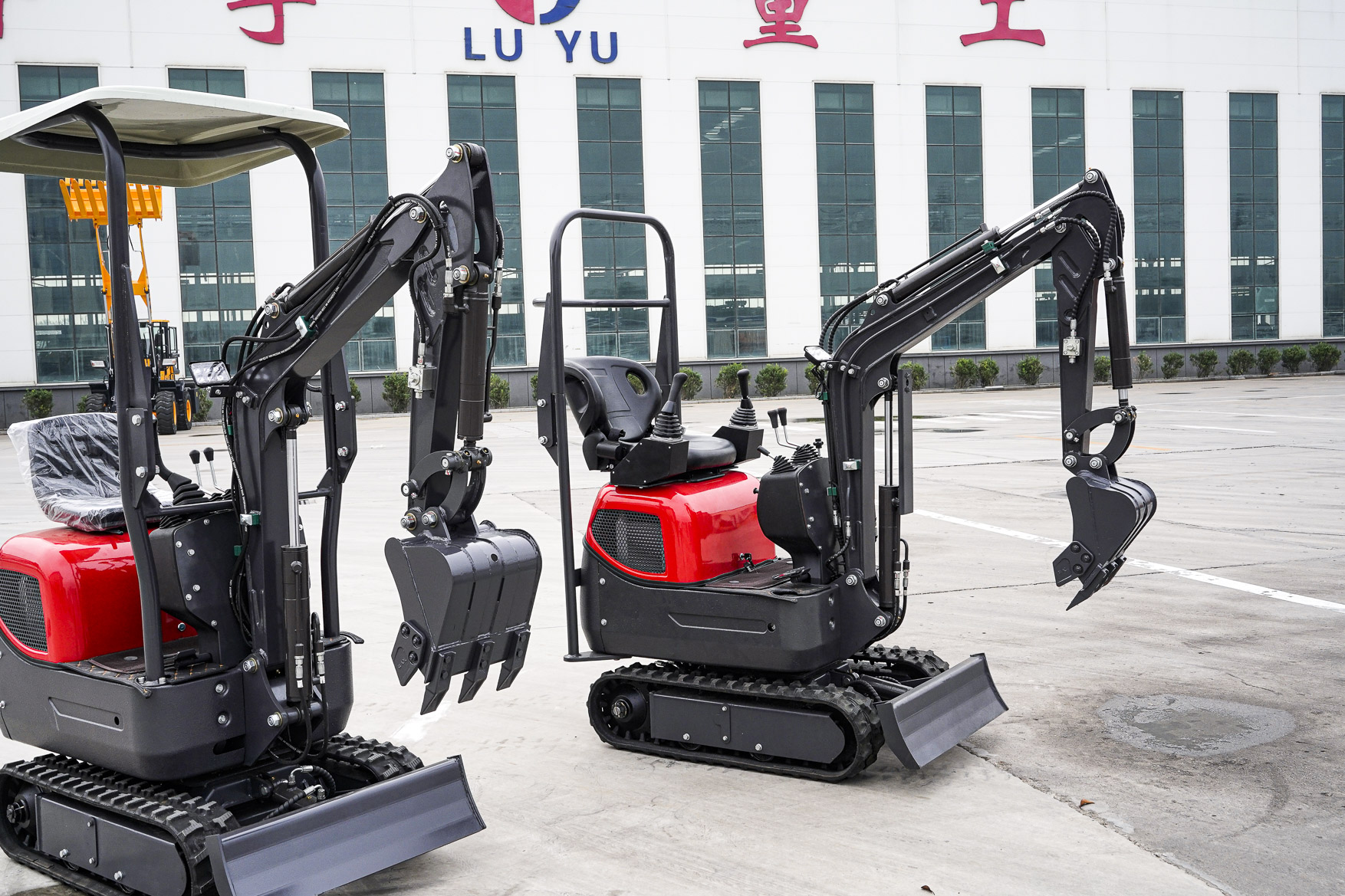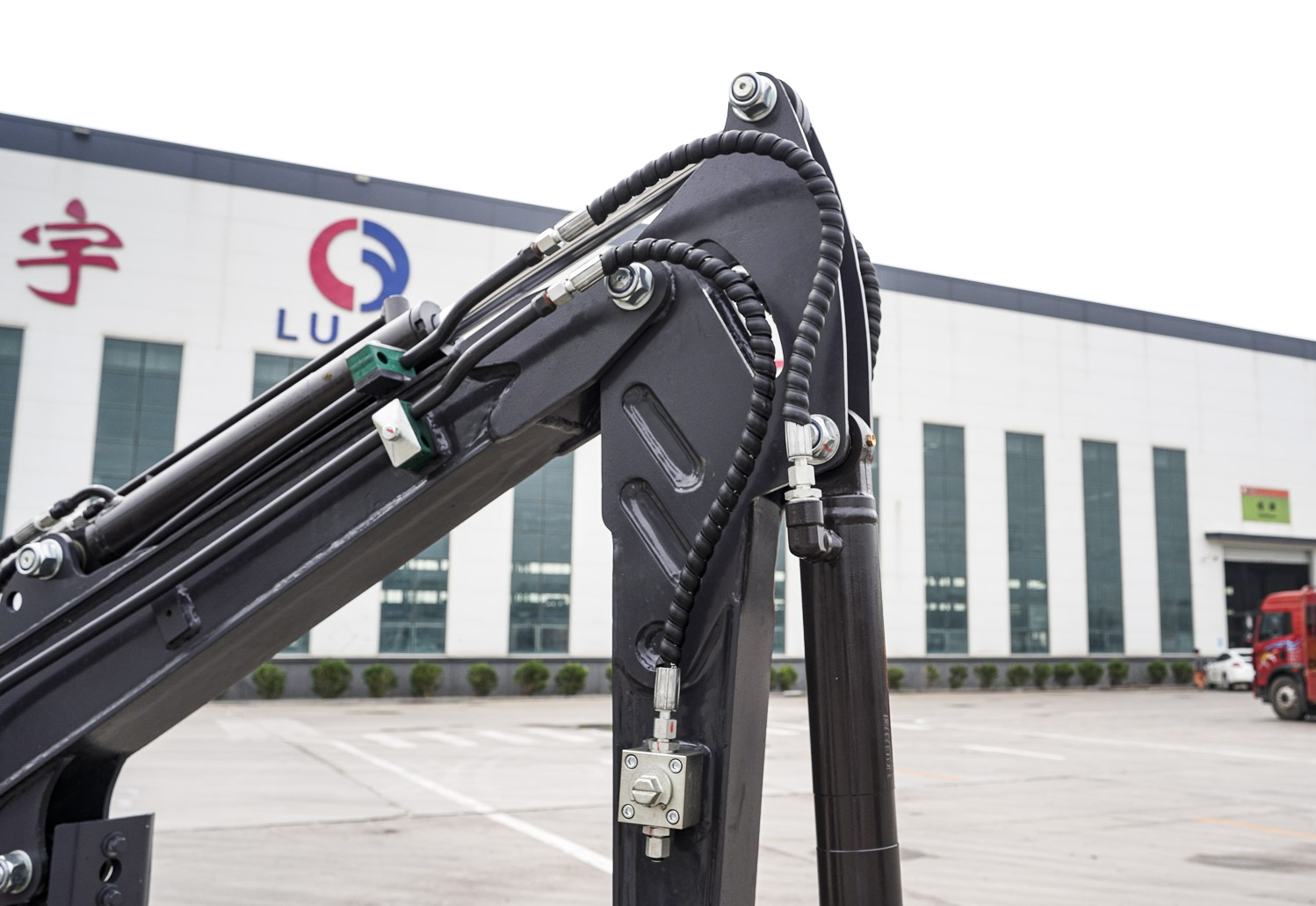Maintenance of excavator bucket
2024-04-25
Luyu Machinery is a manufacturer specializing in the production of construction machinery, including small excavators, loaders and forklifts, among which small excavators because of its easy operation, a wide range of use, in recent years by the majority of users like. It can not only be used for construction machinery projects, but also very convenient for family farms. The most basic function of the excavator is to dig, so the shovel of the excavator is an important working part, and proper maintenance can extend its service life and maintain good working condition. Here are some common ways to maintain a bucket with Lu Yu machinery.

1. Regular cleaning: Regular cleaning of the bucket can remove the soil, sand and other impurities attached to the surface. Use a high pressure water gun or cleaning agent to clean the surface of the bucket. After cleaning, make sure the bucket is completely dry to avoid water accumulation.
2. Check the cutting edge and bucket teeth: check the cutting edge and bucket teeth of the bucket regularly to ensure that they are intact. If there is wear, crack or failure of the cutting edge or bucket teeth, timely replacement to ensure the normal work efficiency and safety of the bucket.
3. Coating protective agent: After cleaning and drying the bucket, a layer of protective agent can be coated on the surface of the bucket. This can travel a protective layer, reduce the bucket and the external environment contact, prevent corrosion. Select a protective agent suitable for the dig material and apply according to the instructions.
4. Maintenance lubrication: the hinged points and moving parts of the bucket need appropriate lubrication. Check the lubrication points regularly to ensure that the lubricating oil or grease is sufficient, and replace the lubricating oil or grease regularly.
5. Prevent excessive load: The bucket bears a huge load in the work, but avoiding excessive load can reduce the wear and damage of the bucket. Follow proper operating techniques and instructions to avoid overloading the bucket.

Regular inspection: Regular inspection of the overall condition of the bucket, including wear and cracks in welded joints, joints and other key parts. If any problems are found, repair or replace damaged parts in a timely manner to ensure the safety and integrity of the bucket.

If the bucket is frequently engaged in heavy excavation work, such as digging hard rock or carrying out large-scale earthworks, it may be necessary to reinforce the bucket to increase its carrying capacity and durability. Reinforcement may include increasing the thickness of the steel plate of the bucket, adding reinforcing bars or using more wear-resistant materials. In quarries, mines or large construction sites, which need to withstand continuous heavy loads and frequent shocks, reinforcing the bucket can improve its durability and fatigue resistance. There are also some special conditions may need to strengthen the bucket, for example, when the bucket is used in the Marine environment, the salt in the sea water will accelerate metal corrosion, so the bucket needs to use corrosion resistant materials or increase protective measures. If the bucket needs to excavate special materials, such as high-temperature substances or chemically corrosive substances, the bucket may need to be reinforced to withstand the effects of these special materials. As the use of the bucket increases, the metal material may gradually fatigue and wear out, resulting in a decline in its structural strength. In this case, reinforcing the bucket can restore its strength and extend its service life.

Although we need to reinforce the bucket in some work scenarios, this does not mean that the more the bucket is reinforced, the better. Over-reinforcement of the bucket may have some negative effects on the excavator.

1. Weight increase: Excessive reinforcement of the bucket will increase its own weight, which may lead to the overall weight distribution of the excavator is unbalanced, affecting its stability and operational performance. Too heavy a bucket will also increase the excavator's pressure on the ground, which may lead to ground subsidence or damage.
2. Energy efficiency reduction: Excessive reinforcement of the bucket may increase the fuel consumption and energy consumption of the excavator. The reinforced bucket is heavier and requires more energy to carry out the digging work, which will lead to a decrease in the energy efficiency of the excavator and increase the cost of use.
3. Power loss: Over-strengthening the bucket may increase the load of the excavator, making it require more power and power during the digging process. This may lead to excessive load on the excavator's power system, which reduces its performance and even affects the life of the entire excavator.
4. Reduced operating efficiency: Excessive reinforcement of the bucket may lead to reduced operating efficiency of the excavator. Heavy and inflexible buckets will affect the mobility and accuracy of excavators, making digging difficult and inefficient.
5. Cost increase: Excessive reinforcement of the bucket involves the use of more materials and working hours, which may increase the cost of maintenance and reinforcement, in addition, excessive reinforcement may also increase the manufacturing cost and purchase cost of the bucket.
When strengthening the bucket, it is necessary to pay attention to several aspects

The reinforced bucket should be professionally designed. This includes assessing the structure of the bucket and determining the location, manner and material of the reinforcement. It is best to design by an experienced engineer to ensure that the reinforcement scheme complies with safety standards and the recommendations of the excavator manufacturer. Select the material suitable for strengthening the bucket. The material should have sufficient strength and durability to meet the requirements of the bucket in heavy work and high strength use, and depending on the specific situation, it may be necessary to use high-strength steel plates, reinforcing bars or other special materials. When strengthening the bucket, the key parts of the bucket should be strengthened according to the need, such as the side plate, the bottom plate and the joint. Reinforcement can be achieved by increasing the thickness of the material, adding reinforcing bars, changing the structure form and so on. Ensure that the hardening measures are evenly distributed to avoid excessive or partial hardening. Welding is one of the common ways to strengthen a bucket. When welding, it should be ensured that the welding quality meets the relevant standards and specifications, and the weld should be firm and uniform to avoid welding defects or cracks. Perform welding operations using appropriate welding processes and qualified welders. When strengthening the bucket, it is necessary to consider the coordination and system integration with other excavator components. Ensure that the reinforced bucket can be installed and used normally without affecting the function and performance of other key parts. After the reinforcement of the bucket, the necessary testing and verification are carried out. This includes load testing of the reinforced bucket to ensure the effectiveness of the reinforcement scheme and the safety of the bucket.



